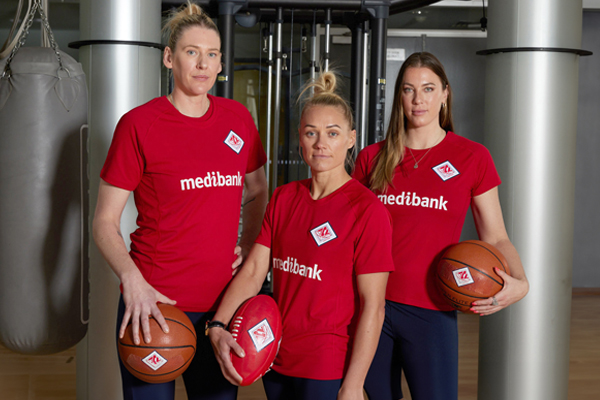-
Need help deciphering some of tennis’ more twisty terminology? Here goes…
Bagel – You thought it was a yeasty, ring-shaped treat popularised by Polish Jewish bakers in New York, right? Wrong. It’s slang for winning or losing a set 6–0. (Score three in a row and it’s a triple bagel – that’s a lot of gluten to be gloatin’ about.)
Buggy whip – Just like the driver of a ye olde carriage whipping a horse, this forehand hit involves a follow-through that goes from low to high, crosses the opposite shoulder and finishes on the same side. Wutt-kish!
Cyclops – This now-defunct computer system was used to detect serves that landed out-of-bounds, and made an ugly bleep sound. Also, a giant one-eyed mythological monster – which suggests that neither had great perspective to begin with, really.
Deuce – When the score in a game is 40 to 40. (Also, any of the number-two cards in a deck, a curveball in baseball, American slang for poo and another name for the Devil – proof that tennis could be, as many scientists now suspect, a Satanic ritual).
Dedans – An open gallery for spectators at the service side of a court. (Interestingly, if you say it seven times, it sounds like The Pink Panther theme.)
Dirtballer – A player who specialises in clay courts, not one who rubs their balls in mud in order to splatter their opponent’s nice white clothes.
Egg – When the ball is struck is so high, you can hardly see it.
Fry – When you win or lose a set 6–1 (and no, you cannot fry an egg).
Ghost in to the net – To sneakily move in to the net from the baseline while your enemy is focused on retrieving a ball. Saying “Boo!” is frowned upon.
Grinding – Playing out a rally from the baseline with the hope of winning by attrition – not when players decide to randomly bust out inappropriate Miley Cyrus moves.
Hail Mary – An extremely high lob, usually made as a defensive manoeuvre to allow a player to recover their position. Can also be executed whilst muttering prayers and fingering rosary beads.
Hot dog – Also called a “tweener”, this backwards-facing, between-the-legs trick shot is pretty awesome.
Jamming – A strategy of playing the ball back straight at the opponent's body so they cannot extend their racquet to reply. (Could also mean when players pretend their racquet is a guitar and strum a few riffs together.)
Love – Clearly, that most lauded and lionised of human emotional states doesn’t count for much in tennis – it means zero points.
Mac-Cam – The high-speed video system used for instant replays of close shots landing on or near the baseline. It was invented for John McEnroe, so he couldn’t throw tantrums at the umpire any more – “Are you BLIND!?”
Poaching – A wily manoeuvre in doubles whereby the player at the net tries to volley a shot hit to their partner on the baseline. (In this case, you probably could poach an egg.)
Pulp – When the score is 30–30. Also a cool Brit Pop band of the ‘90s.
Pusher – Nope, nothing to do with trying to sell performance-enhancing drugs – it’s a term for an unambitious player who doesn’t try to hit winners.
Racquet abuse – When, in an unsportsmen-like rage, a player slams their racket into the ground or net – “Damn you, Inanimate Object – it’s all your fault!”
Scratch – A player’s withdrawal from a match due to an injury – ironically, not very often from being scratched.
Shank – An accidental shot where the ball hits the racquet frame and ricochets randomly – not when a player a turns their racquet into a concealed stabbing weapon.
Trampolining – A high-velocity shot that occurs when the balls bounces off a racquet with low string tension after being struck flat. (Then again, consider how much more awesome would tennis be if the players had to pogo on trampolines whilst playing?)
Tree – A name for a player who is playing flukishly well, or pulls off a shot that floors his more-skilled opponent.
Seed – A player’s rank in a tournament. (We’re guessing if they’re treeing enough, they also have to eventually seed too, right?)
Need help deciphering some of tennis’ more twisty terminology? Here goes…
Tennis translated

-
Everything you need to know about parkrun
Been wondering what a parkrun looks like? Where do you go? What do you do? How do you sign up? Find out here.
-
Five ways to exercise when on a budget
You don’t need to spend money on gym memberships just to meet your fitness goals. Here are five free ways to stay healthy and active when you’re living on a budget.
-
How parkrun changed my life
Christie Farrow went from being an exercise-phobe to a true blue runner with parkrun.
-
Australia's top female athletes unite on ACL injury
Some of Australia's most talented athletes have joined forces to highlight the unique injury challenges women face.
-
How to create your perfect summer fitness plan
Be inspired by the sunshine and get moving
-
The essential foam rolling routine
Improve posture and flexibility with this essential foam rolling routine. Discover effective stretches to ease muscle tightness and enhance your daily movement.
Subscribe to receive the best from Live Better every week. Healthy recipes, exercise tips and activities, offers and promotions – everything to help you eat, move and feel better.
By clicking sign up I understand and agree to Medibank's privacy policy






